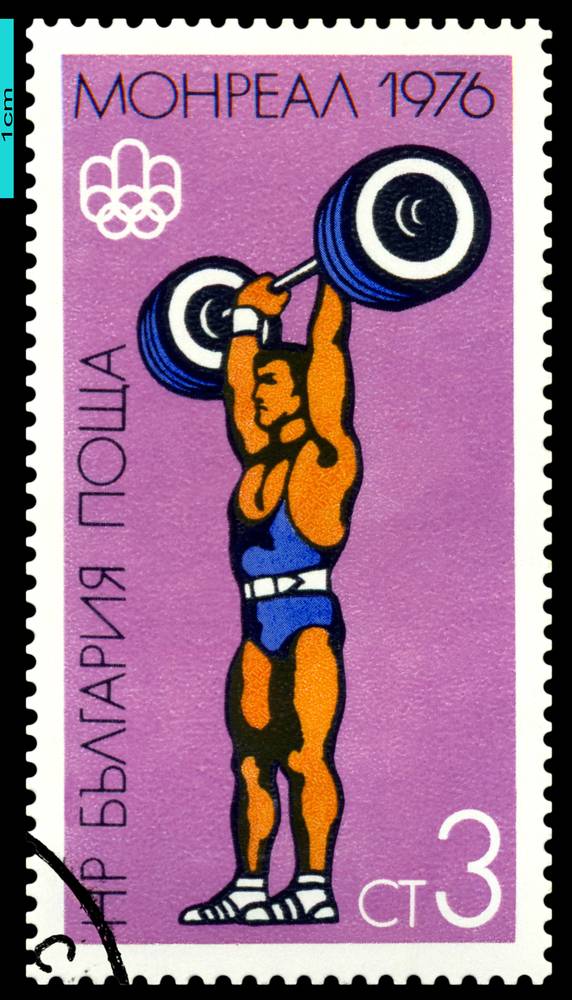The sport of weightlifting appeals strongly to the individual sport athlete for a variety of reasons. The most obvious of these is that once you are out on the platform, you are completely on your own. No one to help you, but then again there is no one with whom to share the glory. The individual who thrives under this type of condition is the one attracted to the sport. It is even more focused than other individual sports events. You are not running against seven other athletes, nor are you competing in your event while others are competing simultaneously in free exercise. You don’t even have an opponent to detract attention from you.
What some weightlifters don’t always figure out, though, is that training for the sport is best done in a group setting. Even if you’re not especially social, you will benefit from training in a group setting.
You see humans are inherently social. The reason that we have become the predominant large-vertebrate species on the planet is that we have been able to learn how to work effectively in small to medium (up to 25 individuals) sized groups in order to most effectively solve the problems of survival. One of the big pluses of working in a group is the ability to develop and preserve culture and technology, and to pass those practices on to future generations for even further development and refinement. The rugged individual would have had trouble competing against a well-coordinated group that could develop specialists to create and manufacture tools or weapons or survival tactics.
So even though weightlifting performance is best suited to the individualistic personality, the training is best performed in a group setting because culture and the access to technology is better facilitated through a group of athletes.
Clarity about the Meaning of a Group Setting
When I write about group setting, I am referring to people gathering together to interact around the task of training. This is not the same as a group exercise class where everyone is doing the same thing simultaneously, although the psychic energy factor may be a similar stimulus. Furthermore, training as a team or a group is far more effective than a private session, even though the physical training industry has placed higher value on “privates,” charging much higher fees for private lessons.
So although too many people might feel that they can train to reach their maximum potential training alone in a home gym, if you read on you may come to understand why training in a group setting is the most effective, time-saving way of reaching the ultimate goal of maximum performance.
I’ve always coached in a group setting and would not do it any other way.
I find that coaching in a group setting to be the most effective. My task as a coach is to keep an eye on a number of people who are training simultaneously at different movements, and determining whether proper technique is being maintained or attained, and whether the training programs are having the desired effect on each athlete. This is a large, complex task and thus much of the transmission of information is left up to the lifters themselves.
 “What do I do with this ripped callus?” is the type of question that can be easily answered by one of my athletes as well as it can by me (especially since I’ve got two paramedics on the team right now). “Where is the best place to get knee sleeves?” “What food supplement store is open until nine?” “Wanna carpool to the meet?” All of these types of information can easily be exchanged within a group.
“What do I do with this ripped callus?” is the type of question that can be easily answered by one of my athletes as well as it can by me (especially since I’ve got two paramedics on the team right now). “Where is the best place to get knee sleeves?” “What food supplement store is open until nine?” “Wanna carpool to the meet?” All of these types of information can easily be exchanged within a group.
A proper attitude toward training, competing, and life is a necessity for a successful athlete. All of these standards and thought processes become a part of the culture of a team, and as such they are most easily developed if they are reinforced by all the team members. While I, as a coach, set the standards, their enforcement and encouragement will come from within the group. My athletes are expected to show up and train as hard as possible. This is a cultural value that they encourage among themselves. They should perform as well as they possibly can in competition. Again, they enforce and encourage this standard.
The camaraderie is also an important element. When training gets to be very demanding and you are tired, simply realizing that your training partners and teammates are experiencing the same thing can provide you with enough uplift to carry on. You encourage them and they encourage you. No back biting and backstabbing on my team either. They all want each other to succeed.
Psychic energy is also generated within a group. When you know that today’s training is going to be especially demanding and you are not feeling 100%, you might not go to the gym if you’re a solitary athlete. But you will go to the gym and give it a try because your teammates are doing the same and feeling the same pain. Nobody knows who is going to be hot either. In a group of eight lifters, one is liable to get hot and just smoke the heaviest set, or PR in some lift, and that can affect everyone else in a gym from the standpoint of psychic energy.
In an ideal situationI would be a professional coach coaching no more than four or five professional athletes. They would be supported by sports medicine, nutritional specialists, sports psychology, and the other benefits of a well-designed infrastructure. They might even be in a training facility with other professional lifters and coaches.
But I am not in that situation. I coach weightlifting in the United States. I am working with eight lifters at a time, and I try to do the best I can at keeping track of them in their development. I have to work with a certain number in order to meet the financial requirements of maintaining our facility. If I didn’t develop a supportive group structure, the benefits of the program would be far less. I would never consider coaching an athlete one-on-one for any prolonged period of time.
 As I look back on the history of weightlifting in this country I think that what enabled four groups of great lifters to do exceptionally well was the fact that they trained in group settings. The core of the great York Barbell teams of the 40s, 50s and 60s trained together in York and on the best days, the weights were flying at unheard of levels. The team champions of Jim Schmitz’s Sports Palace during the 1970s and 80s benefitted from having such a great aggregation of talent training together every day. And I witnessed the same thing with the group that trained at the Olympic Training Center during the 1980s. That group produced a significant number of the Olympians during that decade. I also have to acknowledge the team that John Coffee has assembled to train at his gym. His lifters have won at least seventeen national team titles, and the best of them benefitted from training together much of the time.
As I look back on the history of weightlifting in this country I think that what enabled four groups of great lifters to do exceptionally well was the fact that they trained in group settings. The core of the great York Barbell teams of the 40s, 50s and 60s trained together in York and on the best days, the weights were flying at unheard of levels. The team champions of Jim Schmitz’s Sports Palace during the 1970s and 80s benefitted from having such a great aggregation of talent training together every day. And I witnessed the same thing with the group that trained at the Olympic Training Center during the 1980s. That group produced a significant number of the Olympians during that decade. I also have to acknowledge the team that John Coffee has assembled to train at his gym. His lifters have won at least seventeen national team titles, and the best of them benefitted from training together much of the time.
When I came away from a tour of Bulgaria and the Soviet Union in 1989, I realized that the reason Bulgaria was able to beat the Soviets was that they often assembled the thirty best lifters in the country to train together. If not all thirty, then the Senior A, Senior B and Junior A teams (each composed of ten lifters) all trained as groups. The benefits of this group training are obvious when reviewing the performance of the Bulgars at the world championships in the 70s and 80s.
Weightlifters develop best when training together on a regular basis under the supervision of a qualified coach. Training alone is not nearly as effective.
Photos courtesy of Shutterstock.






